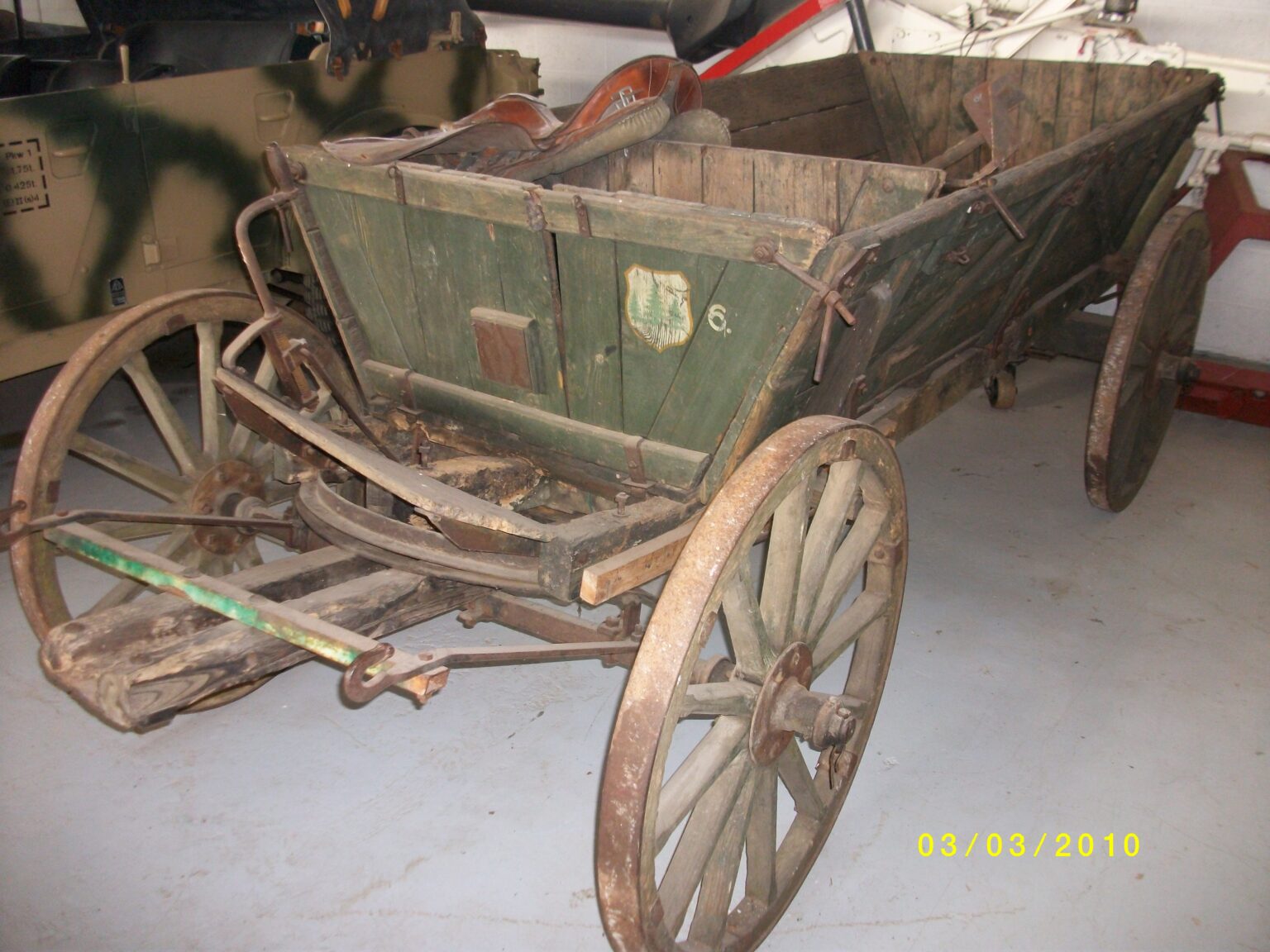The image of the Blitzkrieg is one of swathes of massed armour and mobile forces scything across Poland, Belgium, France and Russia. Although not entirely untrue, an often over looked fact is that throughout the war the German army was primarily a horse-drawn army. People describe one of their overriding impressions of encounters with the German military machine being one of the smell of leather and horses!
The German army employed over 3 million Zugpferde or draft horses during the course of WWII, many of these animals also died serving their country.
We were very fortunate to discover an absolutely original Heeresfeldwagen , we had only seen one of these before at the WTS in Koblenz. What makes this wagon unique is that it is still in its original colour (albeit faded) and has its old divisional unit markings. We have not yet worked out what these markings are and would really appreciate any assistance in this regard.
We do not intend to restore the wagon as that would destroy its original state and the body and backbone are simply not restorable as they are infested with woodworm. We may replace the wooden spine given that the old one is badly cracked and a previous owner had used modern coach bolts in an attempt to secure it.
This wagon does offer an interesting diversion from our Foundations theme but then again it provides a unique example of what represented 80% of Germany's transport during WW2 - horse drawn wagons. A German veteran who visited us shortly after the wagon arrived was delighted to see it - 'Oh a Panjewagen!' and went on to tell us how and where they were used.
- This article has 279 words
- Reading time: 1 minute
- There are no photos
Become a Member - Access the Full Article
Members gain access to the full content of our articles, including photo galleries.


